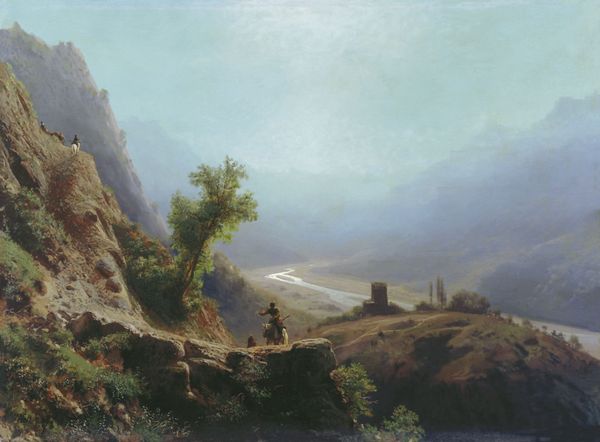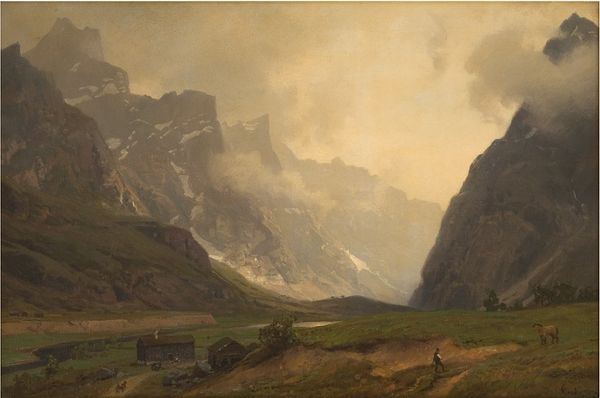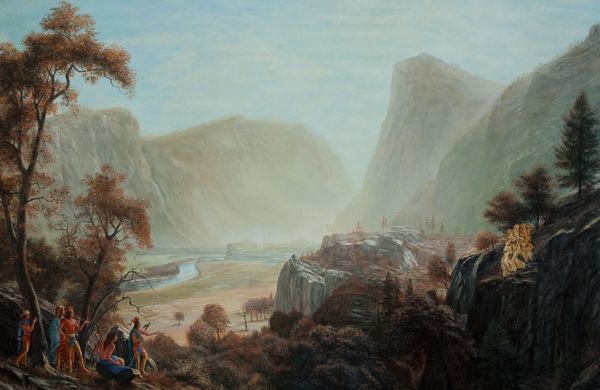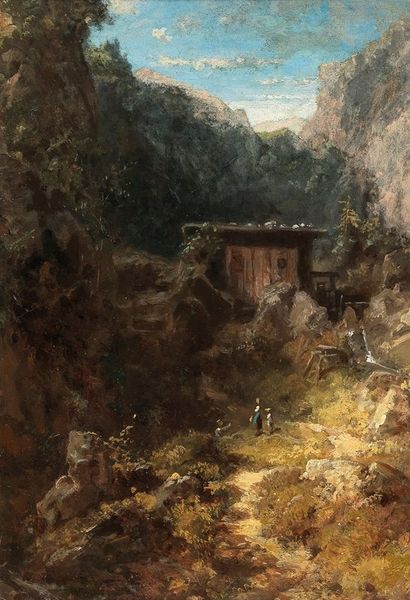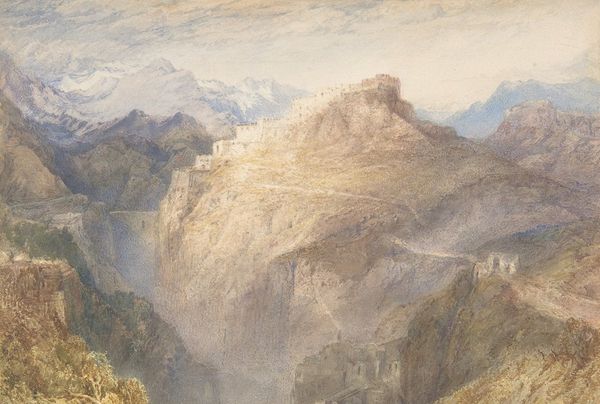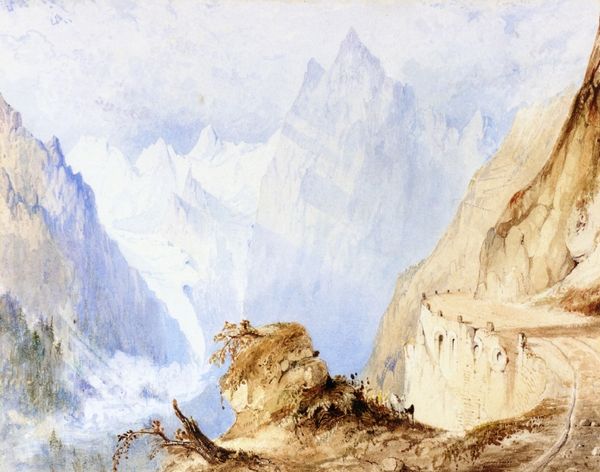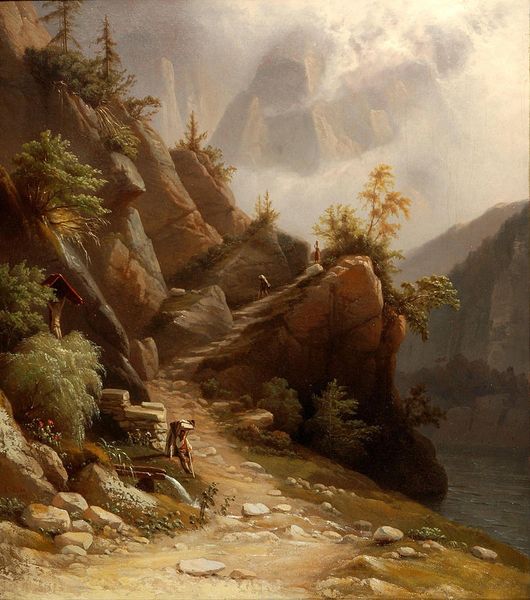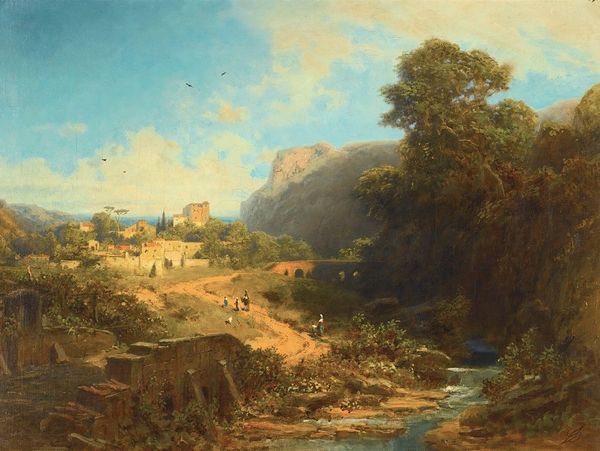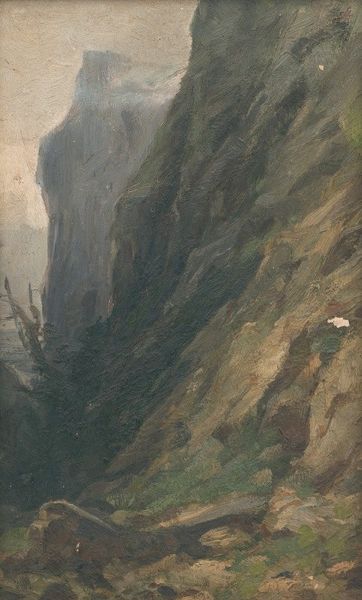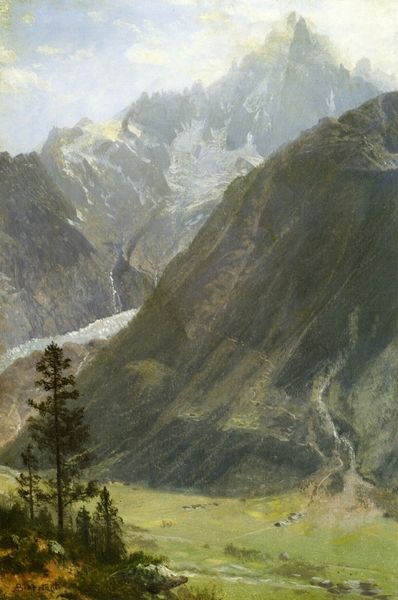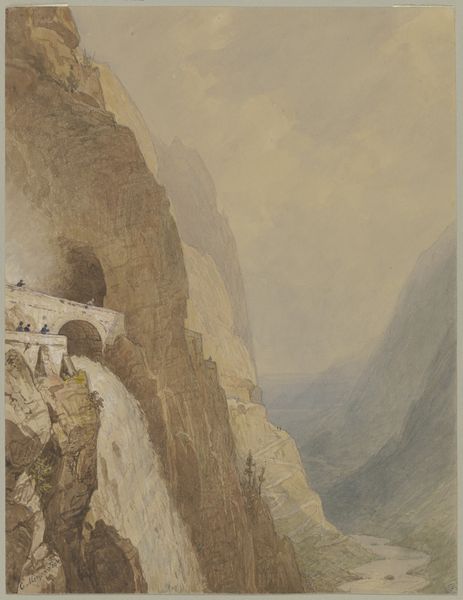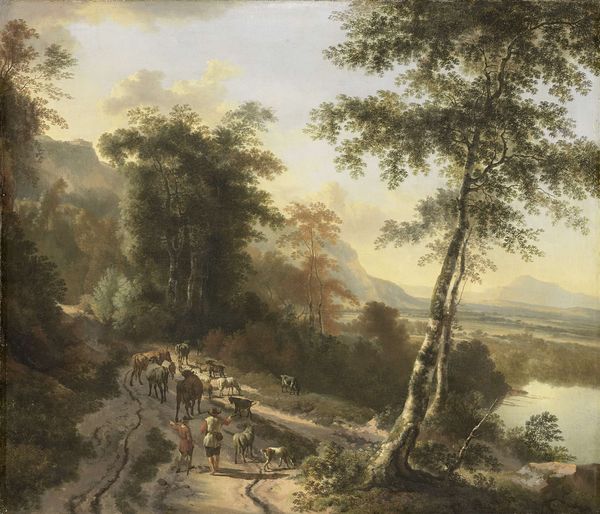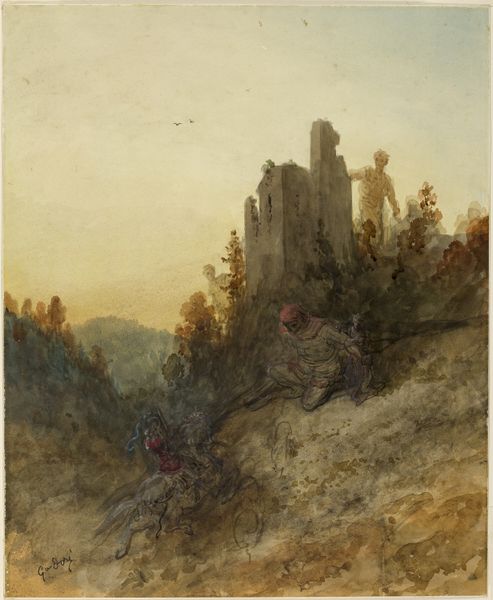
Dimensions: height 26.0 cm, width 23.0 cm, thickness 1.0 cm, depth 5.7 cm
Copyright: Rijks Museum: Open Domain
Johannes Tavenraat painted this landscape in Tirol using oil on panel, a traditional technique dating back centuries. The subdued palette and visible brushstrokes emphasize the misty atmosphere and rugged terrain. Look closely, and you'll see how Tavenraat uses layers of paint to build up the form of the mountains, creating depth and a sense of scale. The panel support is smooth, allowing for fine detail in areas like the distant waterfall, and the figures. The artist's engagement with this time-honored method infuses the work with a sense of history. Yet it also reflects the social context of 19th-century Romanticism, where idealized landscapes were popular among the growing middle class. This painting embodies a tension between the traditions of landscape painting and the rising desire for picturesque views amongst a new consumer class. Understanding the material and the method, in this case, oil paint on a wood panel, along with the social context, allows us to fully appreciate the artistic intention and cultural significance of Tavenraat's work.
Comments
rijksmuseum about 2 years ago
⋮
A landscape with towering mountains and insignificant human figures and animals in the foreground are typical elements of a Romantic composition. Tavenraat fell under the spell of the landscape while travelling through Tirol and made countless drawings and oil sketches of it. Here he painted the morning mist in bold gradations of violet. The small mountain hut and the miniscule group of shepherds with their flock make the mountains seem even higher.
Join the conversation
Join millions of artists and users on Artera today and experience the ultimate creative platform.
